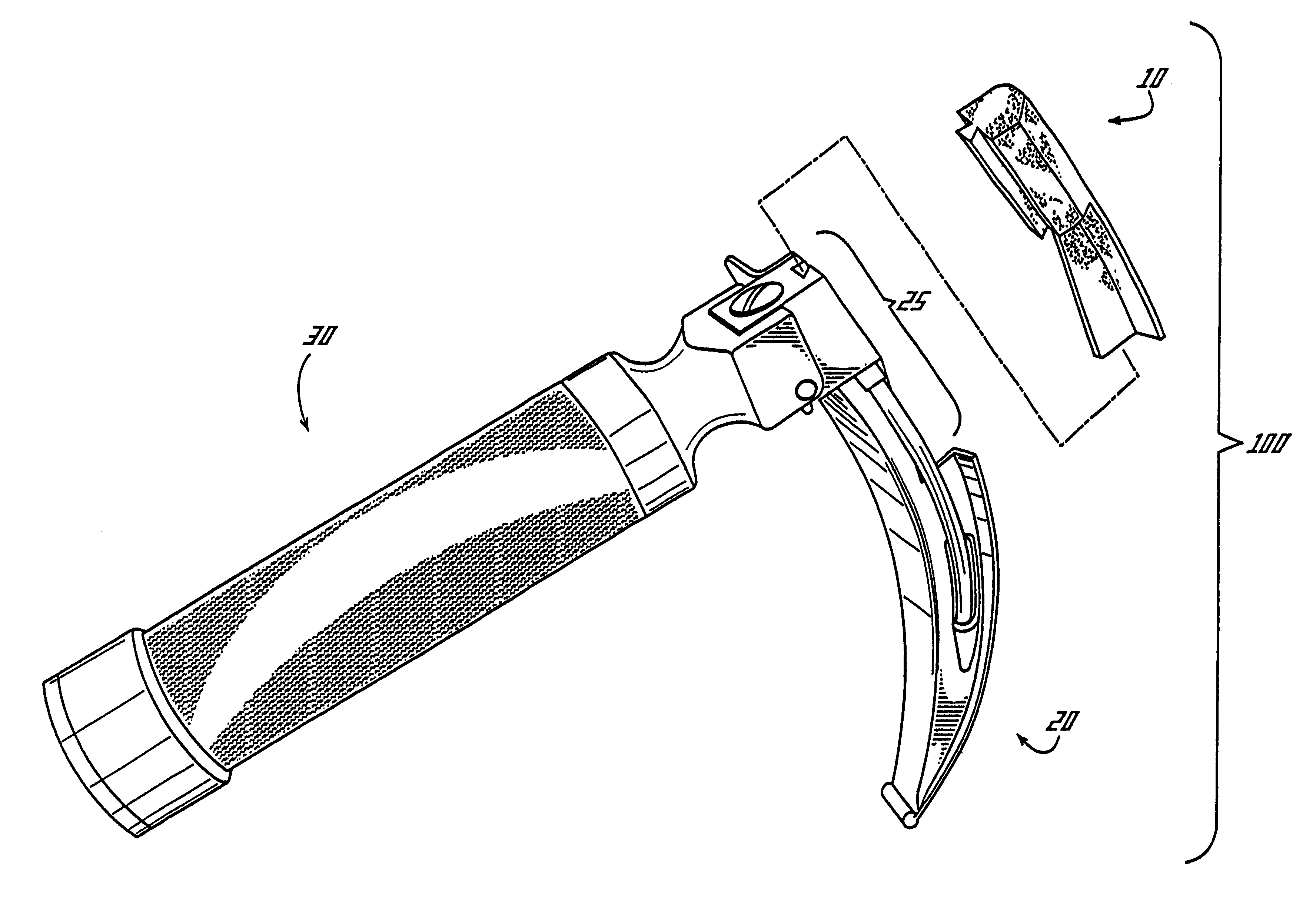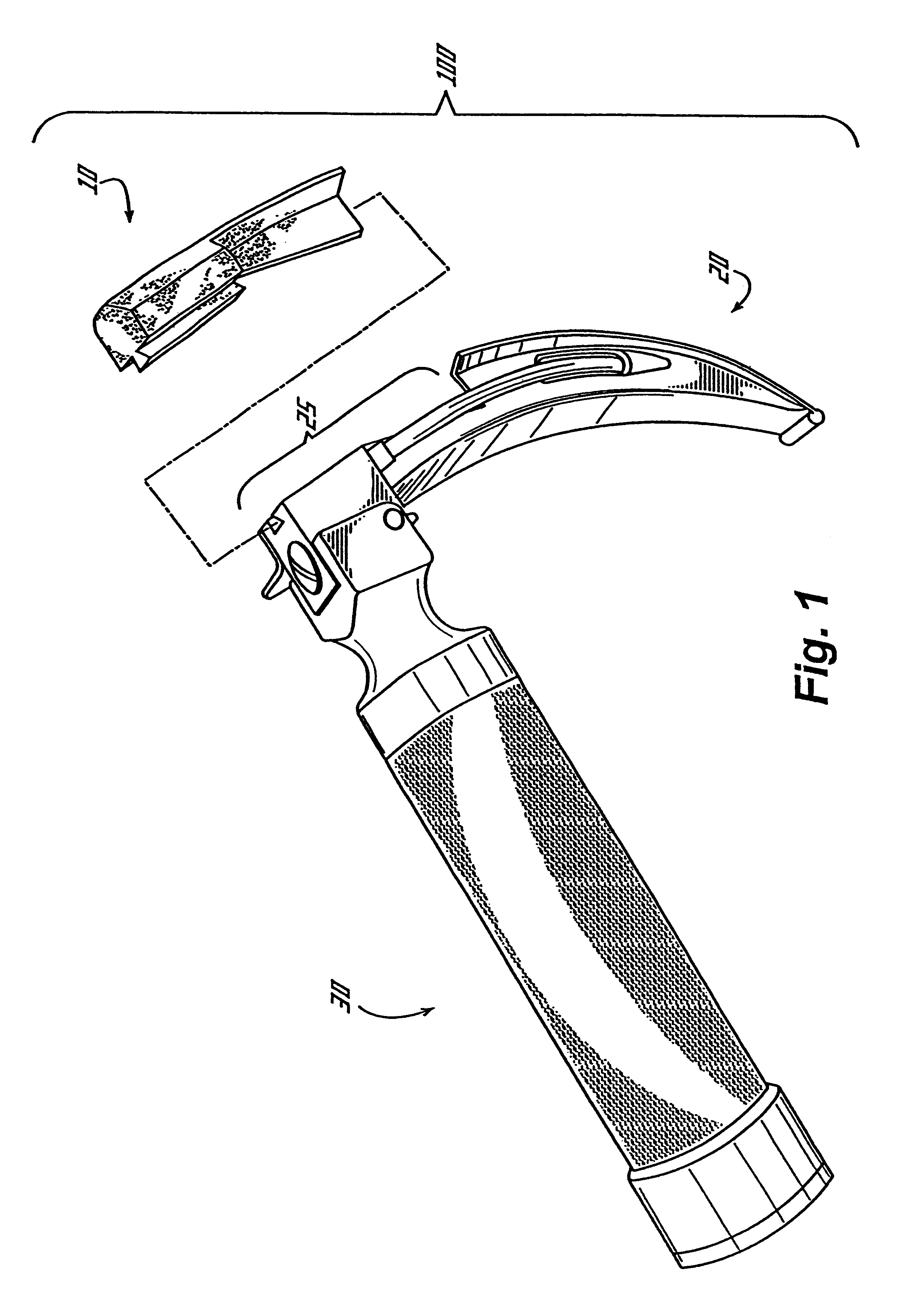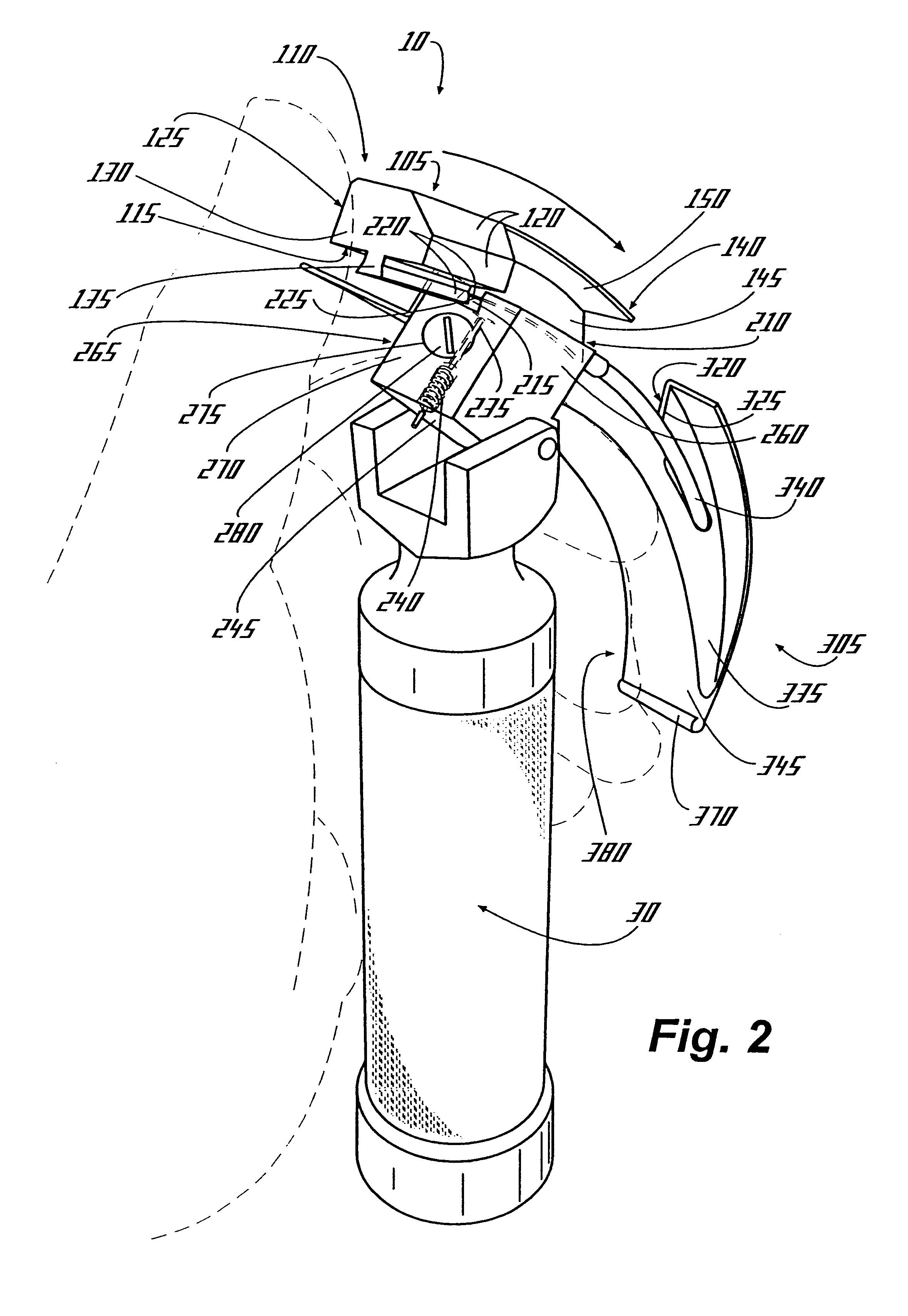Modified laryngoscope blade to reduce dental injuries during intubation
a laryngoscope and blade technology, applied in the field of modified laryngoscope blades, can solve the problems of inability to completely remove the possibility of intubation trauma, dental damage is a potential, and the maxillary incisors are at particular significant risk during intubation, so as to reduce the likelihood of trauma
- Summary
- Abstract
- Description
- Claims
- Application Information
AI Technical Summary
Benefits of technology
Problems solved by technology
Method used
Image
Examples
Embodiment Construction
An overview of a preferred embodiment of the present invention is illustrated in FIG. 1. The inventive modified laryngoscope blade assembly 100 includes a removable protective insert 10 and a modified blade structure 20. The blade structure 20 has a recess 25 in its upper surface into which the insert 10 is received. The inventive modified laryngoscope blade assembly 100 is designed to functionally mount on a conventional laryngoscope handle 30 which serves both as a user handle and as a battery housing and power supply.
FIG. 2 provides further details of the working interaction among the removable protective insert 10, the modified blade structure 20, and the conventional laryngoscope handle 30 of FIG. 1. The protective insert 10 has a body portion 105 and a blade portion 145. The body portion 105 has an maxillary surface 110, a blade interface surface 115, a buccal surface 120, a medial surface 125, an anterior surface 130, and a retention ridge 135. The retention ridge 135 extends...
PUM
 Login to View More
Login to View More Abstract
Description
Claims
Application Information
 Login to View More
Login to View More - R&D
- Intellectual Property
- Life Sciences
- Materials
- Tech Scout
- Unparalleled Data Quality
- Higher Quality Content
- 60% Fewer Hallucinations
Browse by: Latest US Patents, China's latest patents, Technical Efficacy Thesaurus, Application Domain, Technology Topic, Popular Technical Reports.
© 2025 PatSnap. All rights reserved.Legal|Privacy policy|Modern Slavery Act Transparency Statement|Sitemap|About US| Contact US: help@patsnap.com



